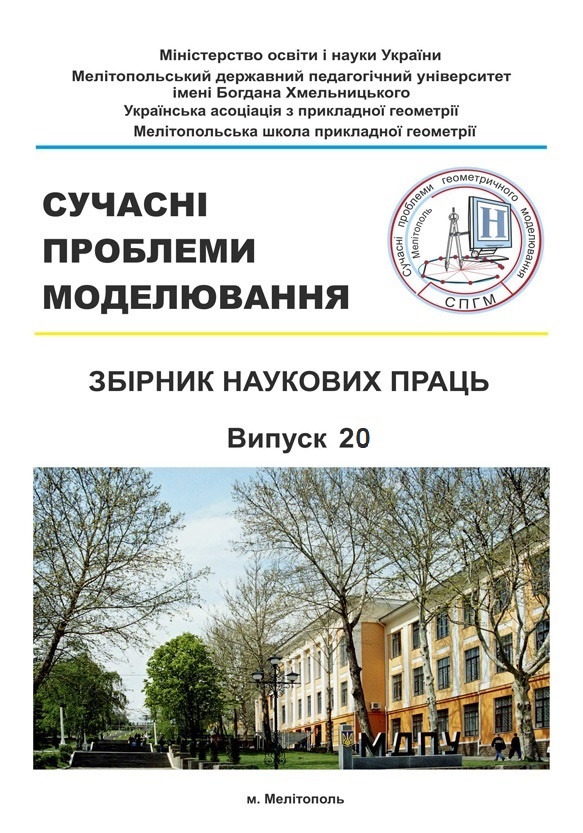COMPOSITE GEOMETRIC SIMULATION OF A CONICAL SURFACE
Abstract
The conical surface, the basis of which is a spatially discrete curve of arbitrary shape, is considered. The equations of the conical surface in parametric form are sought. It is pointed out that, in this case, the basis is discretely represented by n points, the degree of a point polynomial, which compositionally globally interpolates these n points of the basis of KP, is equal to.
Parameterization of the CP base is carried out along the links of the accompanying broken line, on the basis of which a point polynomial is written. The vertex of a conical surface (CP) is also considered as an accompanying broken line degenerate into a point that is n-fold. The theorem is proved that any n-fold point can be compositionally interpolated (compointerpolated) by a point polynomial of degree. An explanation is given of how the n-fold point interinterpolation occurs.
The formation of a point polynomial is considered, which linearly interpoles the edges of the side surface of the cone using point polynomials for the vertex, base and edges of the side surface of the cone, a two-parameter point polynomial of the side surface of the cone is formed.
It is concluded that a two-parameter point polynomial, such as that obtained for a conical surface, is suitable for describing any other linear surfaces. To do this, select the appropriate original geometric composition of the geometric figure, using which you can build the desired linear surface. Because of the possibility, for one expression of a two-parameter point polynomial to obtain different types of linear surfaces by changing only the original geometric composition, the modeling method considered in this study is called - composite geometric modeling.
Keyword: conical surface, point polynomial, geometric composition, modeling composition.




